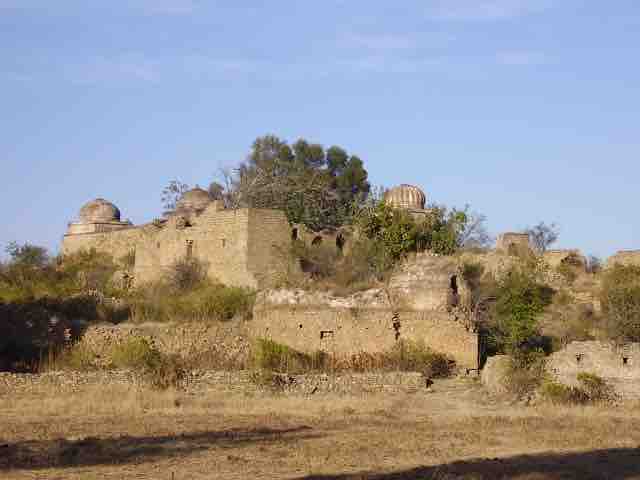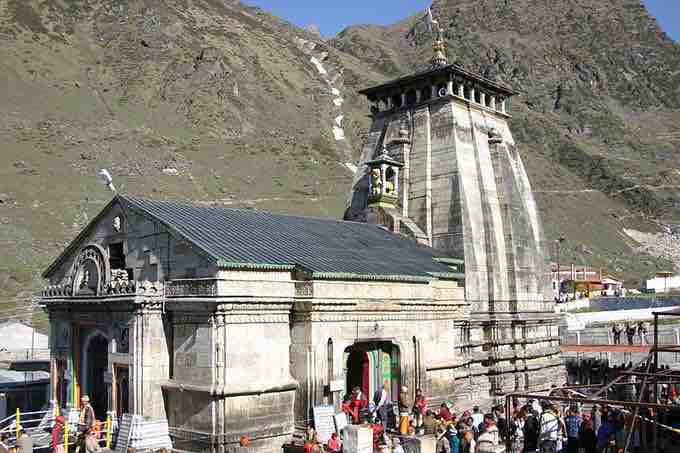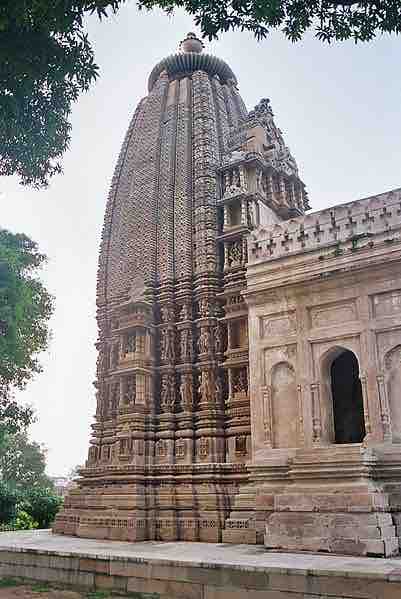Introduction
India's temple architecture was developed from the creativity of Sthapathis and Shilpis, both of whom belong to the larger community of craftsmen and artisans called Vishwakarma. A small Hindu temple consists of an inner sanctum; the garbha graha or womb-chamber in which the idol or deity is housed; a congregation hall; and sometimes an antechamber and porch. The garbhagriha is crowned by a tower-like shikara. At the turn of the first millennium CE, two major types of temples existed: the northern or Nagara style and the southern or Dravida type of temple.
The Northern Style
In contrast to the elaborate appearance of South Indian temples, most temples in North India are very simple in design. This is thought to be due, at least in part, to the constant attacks Hindus have suffered from Muslims historically in this region. North Indian temples also tend to be less orthodox than those in the south. In many cases, all castes and categories of people are permitted to enter the innermost sanctum of these temples and worship the deity personally. However, in such cases, deities are not adorned with valuable jewelry. The innermost heart of this type of temple is a sanctum where a deity (usually cast in fixed stone) is present, followed by a large hall where lay worshipers can stand and obtain "Darśana," or divine audience. Darśana is a Sanskrit term meaning sight, vision, apparition, or glimpse, and is most commonly used for "visions of the divine" in Hindu worship. These visions are either of a deity, a very holy person, or an artifact. An individual can "receive" darsana, or the blessing of a particular deity, within the temple, or from a saintly person, such as a great guru.

Hindu Temple at Tilla Gogian
A small Hindu temple consists of an inner sanctum, a congregation hall, and sometimes an antechamber and porch. It also contains the garbha graha, or womb-chamber, in which the idol or deity is housed, in a process that is called circumambulation,
In this type of temple, there may or may not be a number of additional corridors and halls, in addition to these aforementioned worship rooms. However, in all cases, there will be space for devotees to circulate the temple in a clockwise fashion. In Hindu culture, this kind of circumambulation is a mark of respect. Many of these temples were destroyed during Islamic Rule of India during the Mughal Empire.
Śikhara, a Sanskrit word that translates literally to "mountain peak", refers to the tallest tower in Northern Hindu temple architecture. Because the sikhara tower is always situated over the sanctum sanctorum, where the presiding deity is enshrined, it is the most prominent and visible part of this temple's architecture. Originally, the sikharas were homogeneous in design, but over time, secondary sikharas, which are smaller and narrower, have been plated on the sides of many of these main sikharas.
Notable Northern Temples
The Somnath Mandir, a temple in Gujarat, is considered to be one of the twelve jyotirlinga shrines of Lord Shiva and has a history dating as far back as the beginning of the common area. Delhi's Chhatarpur Temple, notable for its size, is one of the largest Hindu temple complexes in India.

Kedarnath Temple
Kedarnath Temple dedicated to Shiva, in Kedarnath, Uttarakhand

Adinath Jain Temple
Sikhara in Khajuraho.